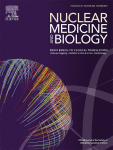
Authors: Paula Demétrio de Souza França, Sheryl Roberts, Susanne Kossatza, Navjot Guru, Christian Masona, Daniella Karassawa Zanoni, Marcio Abrahão, Heiko Schöder, Ian Ganly, Snehal G. Patel, Thomas Reiner.
ABSTRACT
Objectives
The evaluation of disease extent and post-therapy surveillance of head and neck cancer using 2-deoxy-2-[18F]fluoro-d-glucose ([18F]FDG) PET is often complicated by physiological uptake in normal tissues of the head and neck region, especially after surgery or radiotherapy. However, irrespective of low positive predictive values, [18F]FDG PET remains the standard of care to stage the disease and monitor recurrences. Here, we report the preclinical use of a targeted poly (ADP-ribose) polymerase1 (PARP1) binding PET tracer, fluorine-18 labeled poly (ADP-ribose) polymerase1 inhibitor ([18F]PARPi), as a potential alternative with greater specificity.
Methods
Using an orthotopic xenograft mouse model injected with either FaDu or Cal 27 (human squamous cell carcinoma cell lines) we performed PET/CT scans with the 2 tracers and compared the results. Gamma counts and autoradiography were also assessed and correlated with histology.
Results
The average retained activity of [18F]PARPi across cell lines in tumor-bearing tongues was 0.9 ± 0.3%ID/g, 4.1 times higher than in control (0.2 ± 0.04%ID/g). Autoradiography and histology confirmed that the activity arose almost exclusively from the tumor areas, with a signal/normal tissue around a ratio of 42.9 ± 21.4. In vivo, [18F]PARPi-PET allowed delineation of tumor from healthy tissue (p < .005), whereas [18F]FDG failed to do so (p = .209).
Conclusions and implications for patient care
We demonstrate that [18F]PARPi is more specific to tongue tumor tissue than [18F]FDG. [18F]PARPi PET allows for the straightforward delineation of oral cancer in mouse models, suggesting that clinical translation could result in improved imaging of head and neck cancer when compared to [18F]FDG.
Abbreviations
PARP1poly (ADP ribose) polymerase1[18F]FDG2-deoxy-2-[18F]fluoro-d-glucosePETpositron emission tomographyCTcomputed tomographyPPVpositive predictive valueMSKMemorial Sloan Kettering Cancer CenterROIarea of interestH & Ehematoxylin and eosin stain.
Keywords
Fluorine-18 labeled poly (ADP-ribose) polymerase1 inhibitor[18F]PARPi2-deoxy-2-[18F]fluoro-d-glucose[18F]FDGPET/CTOral cancerSquamous cell carcinoma.


